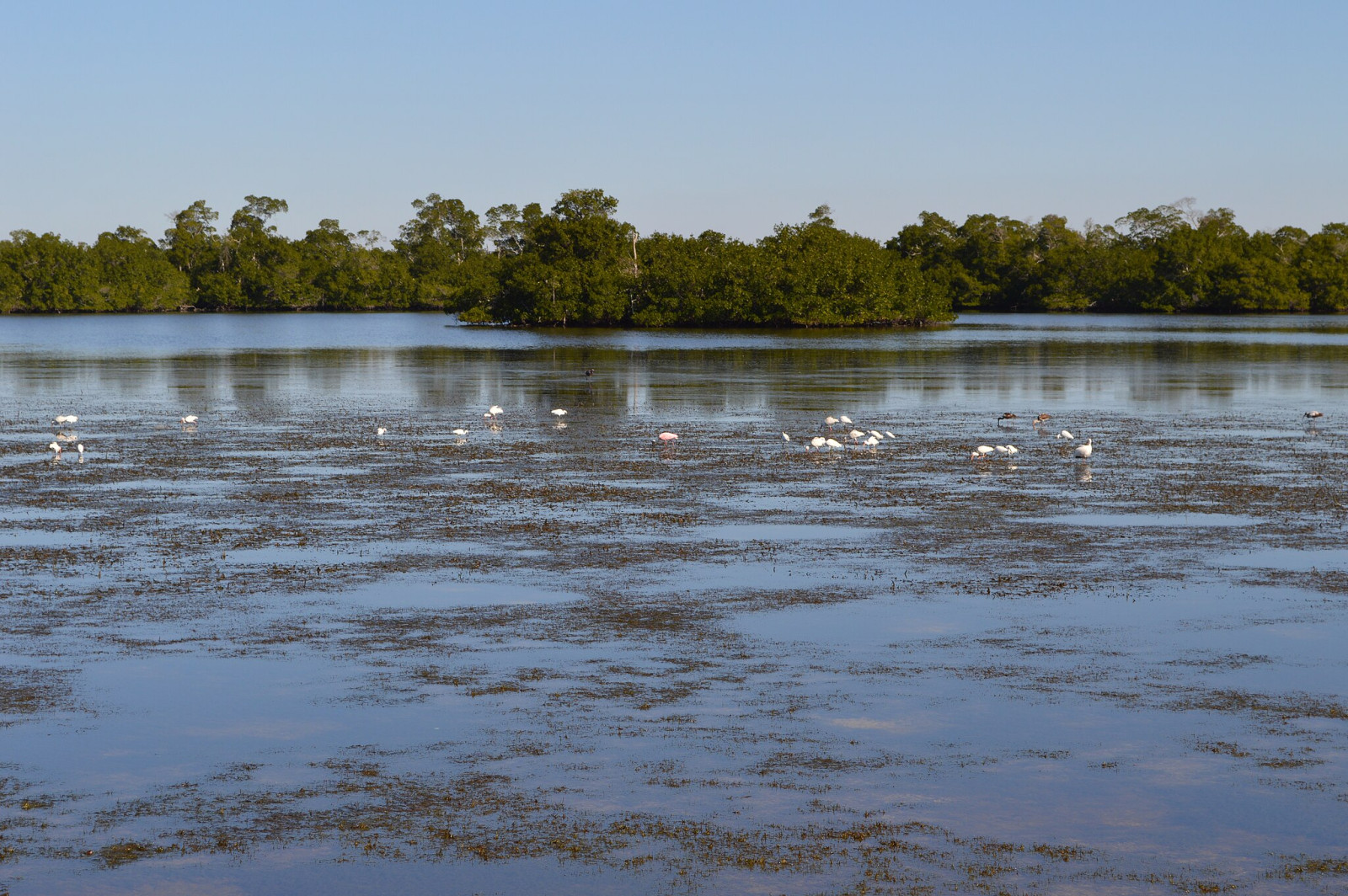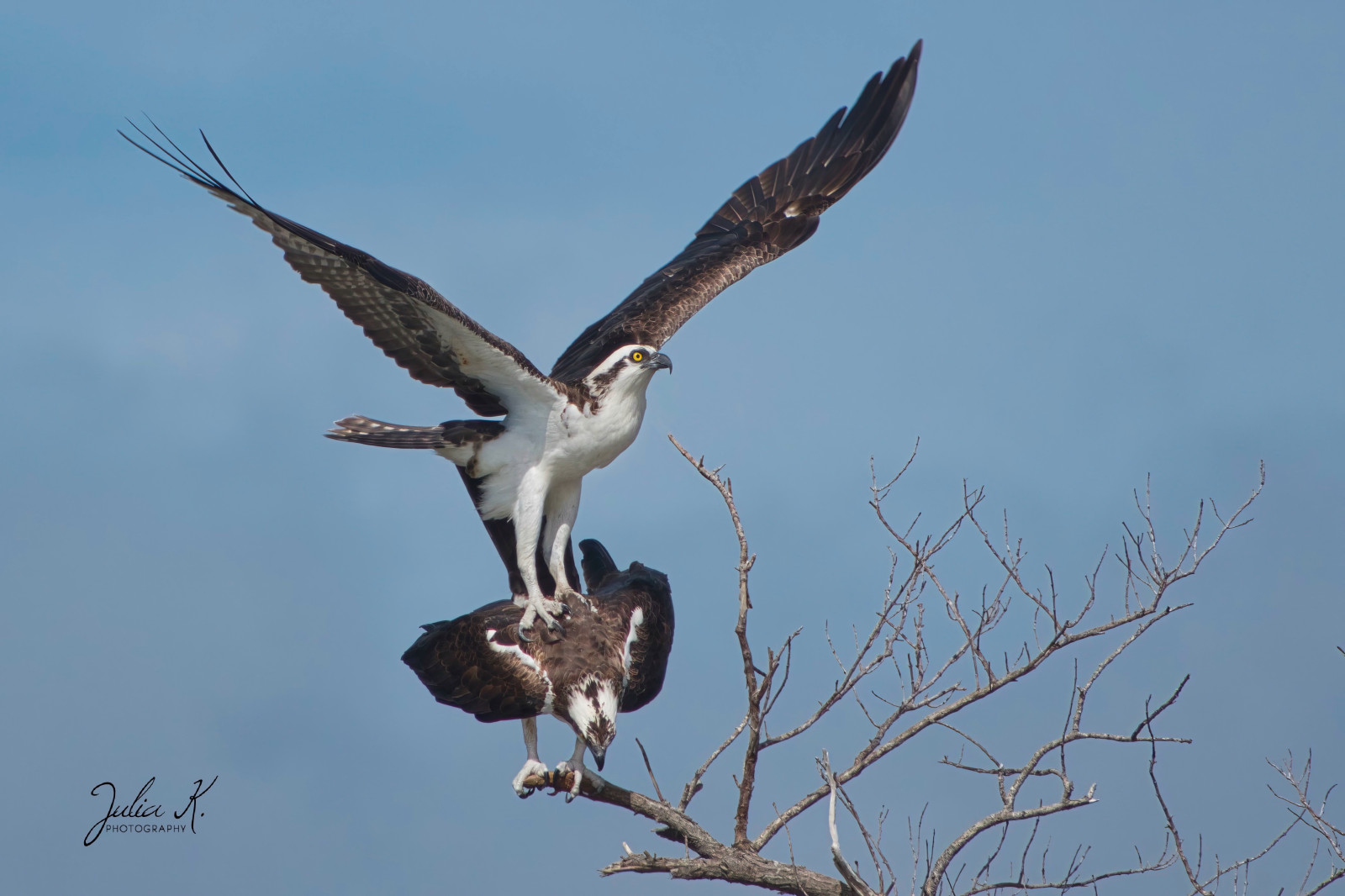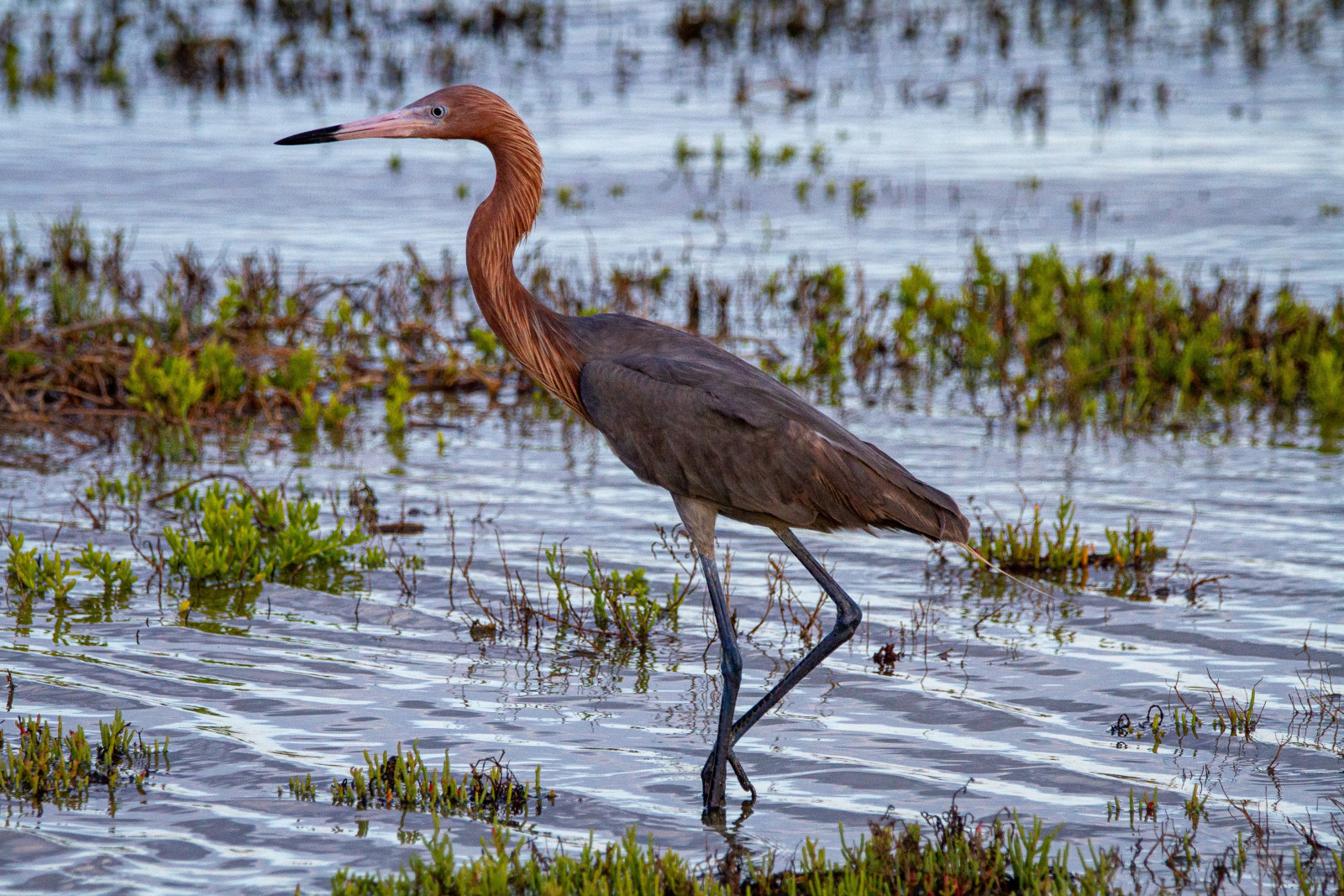Charger images
Les formats d'image autorisés sont de type jpeg, png ou gif
La taille maximale du fichier doit être de 20MB



Wonderful refuge on west coast of Florida. The 5200 acre (21 km2) refuge was established to protect one of the country's largest mangrove ecosystems.
Ding Darling Refuge has so many birds over all seasons. It is a maize of large and narrow waterways, each lined with red mangroves. It has a Wildlife Drive, birding trails, bike trails, a marvelous gift shop, a gallery of artists, lectures and presentations, community involvement, and has many visitors from all over the world. Worth spending the entire day as birds are visible in pond, bushes, and walking along the road, and just because they love it there. They nest nearby in trees and on bird islands. Lots of fish, and a mudflat with observation tower.
Migratory waterfowl are particularly plentiful as are herons, egrets, plovers, and ibis as they stalk the mud flats in search of shrimp, marine worms, aquatic insects, and other tidbits. The Refuge is home to over 245 species of birds. Best birding is from January through March. Best time is during low tide when the mudflats are exposed (see link to the tides table below)
Among the birds you can observe in the refuge are Great Blue Heron, White Ibis, Brown Pelican, Great White Pelican, Reddish Egret, Green Heron, Glossy Ibis, Great Blue Heron, Yellow-crowned Night Heron, Black-crowned Night Heron, Tricolored Heron, Dunlin and Roseate Spoonbill.
Ding Darling Refuge is situated on the west coast of Florida approximately 15 miles southwest of Fort Myers on Sanibel Island. Drive over a bridge from Ft. Myers to Sanibel Island, then into the refuge, which is large and full of fascinating places to stop. Go into the Visitors Area (is open from 9am to 4pm and parking is free) to see the gift shop and park. Go into the actual refuge itself to see the mudflats, inlets, and tons of birds.
The Wildlife Drive (Entry fee for vehicles $10) will take visitors on an introductory tour of the impoundment system that makes the refuge famous, with incredible views of herons, egrets, ibises, storks and spoonbills, and shorebirds during drawdowns in spring and fall. Drive the 4-mile road slowly, or bike or hike this same road along with several spur trails for a slower, more intimate view of the mangrove estuaries. Note: the Wildlife Drive is open every day, EXCEPT FRIDAYS, all year regardless of the holidays.
The Indigo Trail (indicated on the map) is a 4-mile, round trip trail that leaves from the Visitor and Education Center parking lot and ends at the Cross Dike, which extends from the Wildlife Drive.
Go early and stay late - all will work - check on tides and take a lunch if going slowly. Once on the Wildlife Drive, you cannot back up - it is one-way on the road. There are rest rooms along the way. But you can stop anywhere if you pull over to the side of the road.
Votre feedback sera transmis à l’auteur.rice de cette zone et à l’équipe éditoriale de Birdingplaces, qui l’utiliseront pour améliorer la qualité des informations. (Vous souhaitez publier un commentaire visible en bas de page ? Fermez cette fenêtre et choisissez l’Option 1 : « Publier un commentaire, un conseil ou une observation ».)
Veuillez fournir des suggestions d'améliorations ou d'ajouts au texte de ce site ornithologique.
Veuillez fournir vos suggestions d'améliorations ou d'ajouts à la carte.
Veuillez fournir des suggestions d'améliorations ou d'ajouts à la liste des oiseaux.
Cliquez sur l'icône de l'oiseau () Insérez les noms d'oiseau dans votre langue. Ils seront automatiquement traduits pour les autres usagers !